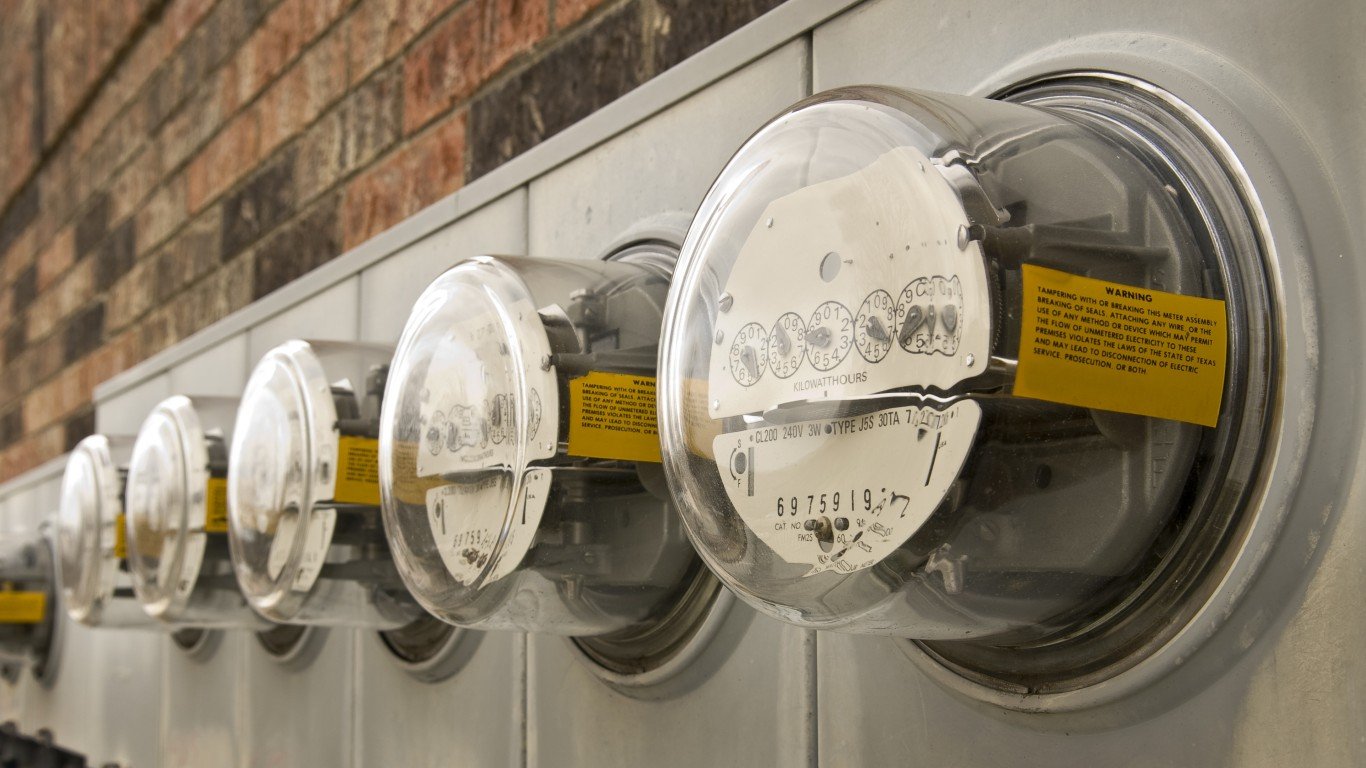

When it comes to defensive stocks with wide moats, utilities have historically fit the description down to every last detail. That may have changed in some markets where utilities have been deregulated to allow competition, but it still holds true for regulated utilities.
With news that NextEra Energy Inc. (NYSE: NEE) has interest in acquiring Duke Energy Corp. (NYSE: DUK), this opens the door for more potential mergers in the industry. First, all reports indicate that Duke instantly rebuffed any potential takeover attempts. What this acquisition though may create is an avenue whereby other utilities consider mergers, if this was under consideration.
Another aspect of any would-be mergers is whether Warren Buffett would consider acquiring a utility for that elusive “whale of a deal” for Berkshire Hathaway Inc. (NYSE: BRK-B). Chances are high that the 90-year old believes that the public value is just too high to acquire a public utility at this time. That said, 24/7 Wall St. laid out a scenario whereby Buffett could consider a transaction of sorts with FirstEnergy Corp. (NYSE: FE) to get a big utility asset on the cheap while it is under investigation.
Before giving too much speculative credence to what could and what should happen, it’s important to understand what valuations are fair for any acquirer to consider.
NextEra Energy was down 2% at $277.00 after the news report, but the stock’s market cap is still worth about $135 billion, despite having reached a high of $299.30 around its pending stock split news. NextEra’s recent guidance also comes with the forecasts for it to keep raising its dividend payments in the coming years. The current 2% dividend yield is more than manageable for NextEra. NextEra’s payout ratio based on a blend of past earnings and current earnings is just above 60%.
Duke Energy’s stock rose 6% to $87.50 after this would-be merger news, but it already is assumed that the utility would have wanted an even larger premium for it to sell out. After all, its 52-week high is $103.79. Where things get more complicated with Duke’s $64 billion market cap and value of 22 times earnings is that Duke’s dividend yield is 4.4%. That is more than double the yield that NextEra shareholders are used to, and in very loose terms it suggests that the dividend obligations of the companies in raw dollars are very close to each other.
Analysts also believe that utilities can rise for years. There are also many utilities that would likely hold up just fine and thrive regardless of who wins the presidential election this year.
As for other utilities that might be worth consideration, many issues need to be considered. Utilities went from being highly defensive to having perceived earnings and dividend risk in the COVID-19 recession. In many instances utilities decided to announce publicly that they would not cut off their services to households for nonpayment in the recession.
Some utilities even went so far to say that they would reinstate services that had been cut off prior to the recession. Investors treated this as a potential invitation for customers to stop paying their bills. This combined with a seizing up of the fixed income markets along with a meltdown in stock prices from February through March brought previously unseen drops in the industry’s stock prices. NextEra lost one-third of its value from the prior peak to trough.
With NextEra and Duke having a pro forma market cap of nearly $200 billion in a fully combined potential transaction, other smaller utilities would have to come into focus. FirstEnergy’s market cap of $15 billion was handily above $20 billion before the recent scandal, but what about others?
Southern Company (NYSE: SO) is a gas and electric utility that counts roughly 8 million customers. Its $57 billion market cap is very close to that of Duke. The utility may not be the same view for a company like NextEra, but it might be an acquirer of its own. Southern has a 4.7% dividend yield, it pays out about 80% of its expected earnings as dividends, and it is valued at close to 17 times earnings. Its $54.00 share price is down from a 52-week high of $71.10, and its Refinitiv consensus analyst target price is $59.60.
American Electric Power Co. Inc. (NYSE: AEP) is now closer to $85.50, and that comes with a $40 billion market cap. AEP has a dividend yield of closer to 3.5%, and its 52-week high of $104.97 is against the consensus target price of $92.38. It also pays out closer to 65% of its adjusted earnings as dividends, and it is valued at close to 19 times earnings. The utility serves the central with nearly 5.5 million regulated customers spread over 11 states, and the company is among the largest U.S. electricity producers.
Xcel Energy Inc. (NYSE: XEL) operates as regulated electric and natural gas utilities. It sells electricity to roughly 3.7 million customers and natural gas to roughly 2.1 million customers. At $69.00 a share, its market cap is $35 billion, and that is still close to a high of $73.00 this year. The consensus target price is $68.17. The dividend yield of 2.5% comes with a payout ratio of just over 60%, and it is valued at roughly 24.5 times expected earnings.
Many other utilities could come into focus if the mergers and acquisitions climate were to become brighter for this industry. That said, mergers of large-sized utilities are not that common. WEC Energy comes with a market cap of roughly $30 billion, followed by Eversource at $28 billion, Consolidated Edison at $25 billion, DTE Energy at $22 billion and PPL at roughly $20 billion.
It is important to consider that merging large utilities may have a hard time securing regulatory approvals. For starters, if a utility were to grow too large it could dominate the power trading and commodity prices based on having much larger demand. The larger utilities might be viewed as too powerful when it comes to lobbying efforts and how long they would like to move toward carbon neutrality or how long they would prefer to phase out existing plants before spending for new plants that are cleaner and greener.
On the Buffett angle, Berkshire Hathaway easily has over $100 billion that it can commit if it wanted to. Buffett and Charlie Munger also have been involved in acquiring utilities and power generation assets. The Berkshire Hathaway Energy business already includes utilities and units such as PacifiCorp, MidAmerican Energy, NV Energy, Northern Powergrid, Northern Natural Gas, Kern River Gas Transmission, BHE Renewables, AltaLink, BHE U.S. Transmission and HomeServices of America.
Essential Tips for Investing: Sponsored
A financial advisor can help you understand the advantages and disadvantages of investment properties. Finding a qualified financial advisor doesn’t have to be hard. SmartAsset’s free tool matches you with up to three financial advisors who serve your area, and you can interview your advisor matches at no cost to decide which one is right for you. If you’re ready to find an advisor who can help you achieve your financial goals, get started now.
Investing in real estate can diversify your portfolio. But expanding your horizons may add additional costs. If you’re an investor looking to minimize expenses, consider checking out online brokerages. They often offer low investment fees, helping you maximize your profit.
Thank you for reading! Have some feedback for us?
Contact the 24/7 Wall St. editorial team.
 24/7 Wall St.
24/7 Wall St.


